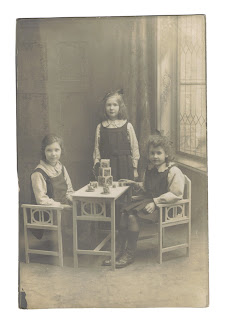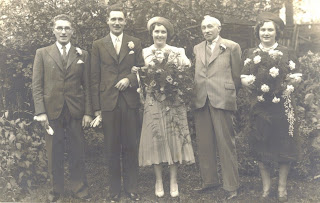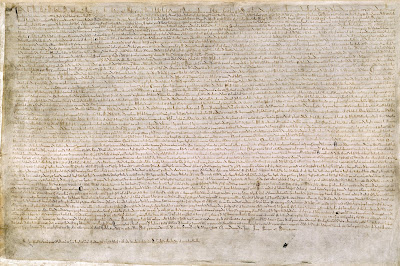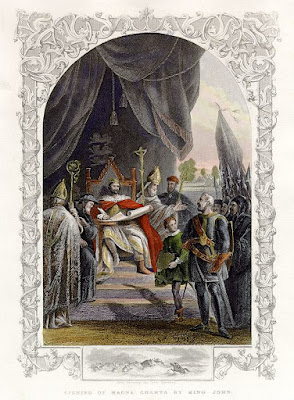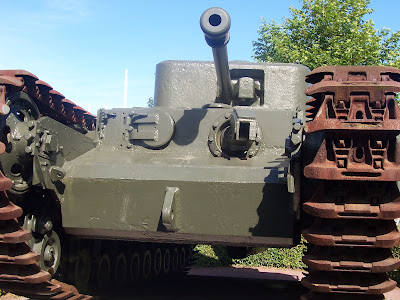In the past I’ve carried out a fictions interview with a
deceased ancestor. This week I’ve written an obituary for my 3 times great
Grandfather.
Peter Arnold Wardle
Peter was born in 1845 in the village of Rainow in Cheshire
to William Wardle a farmer/butcher and his wife Sarah Ann Swindells. He was
their first child born just a few months after they married. He would later
have 7 siblings. Peter was baptised on the 15th October 1845 in the
parochial chapel of Macclessfield, Cheshire.
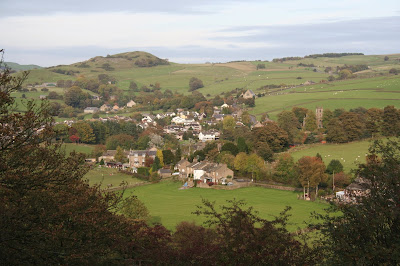 |
| The Village of Rainow in Cheshire |
In 1851 he was living on the family farm in Rainow,
Cheshire. He was living with his maternal Grandmother Mary Swindells, his
parents and his 3 siblings Mary Ellen, William and Thomas. By 1861 he was still
living on the family farm with his Grandma, parents and 3 siblings. They family
had grown and now included 4 more children in John, Eve, Sarah and Catherine.
By 1871 Peter had moved on and moved to Sutton, Cheshire to live with his
paternal Grandfather William Wardle Sn. He was working as a farm servant for
his grandfather.
The 1870’s saw much change in the life of Peter. He met a
woman named Sarah Ann Goodwin. She was a domestic servant who had 2 children of
her own. The connection between the 2 was strong and on the 29th
December 1875 the couple were married at Stockport parish church. Peter was a
30 year old bachelor living in Gee Cross, Cheshire and working as a veterinary
surgeon. Sarah Ann was a 29 year old spinster also living in Gee Cross.
The couple set up home as a new family of 4. Peter raised
Sarah Ann’s illegitimate children as his own. Ann Goodwin was born in Bosley,
Cheshire in 1863 and Harriet Goodwin was born on the 9th September
1864 in the Macclesfield workhouse.
The couple’s first child was born on the 16th
September 1877 in Gee Cross where the couple still lived. He was called William
Wardle after his Grandfather and Great Grandfather. Their second child was
Sarah Ann Wardle and she was born in Gee Cross on the 14th August
1879 and was named after he mother and Grandmother and Great Grandmother.
In 1881 the family of 6 was living in Gee Cross where Peter
was working as a veterinary surgeon in the highly agricultural area of
Cheshire, but by 1891 things had started to go wrong. Peter was now working as
an auctioneer and was involved in the trial of Wych verses Higginbottom. He was
instructed by the judge trying the case to produce certain documents which he
failed to do. As a result Peter was found guilty of contempt of court and was
sent to prison until such time as the documents were produced. Peter spent the
next 11 months in Knutsford jail. During this time his wife and children lived
in Stockport, Cheshire. It was in May 1891 that Peter produced the required
documents and was released from jail.
This period of his life took a toll on Peter’s health and
towards the end of 1891 he developed tuberculosis. Over the next 6 months his
health declined and by June 1892 he was seriously ill.
Peter Arnold Wardle died on the 30th June 1892 at
his home on High Street in Hyde, Cheshire with his wife at his side. He was
just 46 years old. He was buried at Holy Trinity church Gee Cross on the 4th
July 1892.
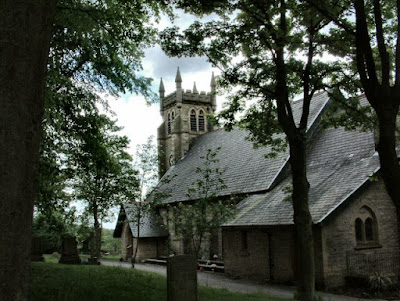 |
| Holy Trinity, Gee Cross, Cheshire. © Gerald England |
Peter was survived by his parents William and Sarah Ann, his
7 siblings, his wife Sarah Ann, his son William, his daughter Sarah Ann, his
step daughters Ann Goodwin and Harriet Goodwin, his first grandchild Herbert
Goodwin and 14 nieces and nephews.
His death took its toll on the family and his father died
just 17 days after Peter.
